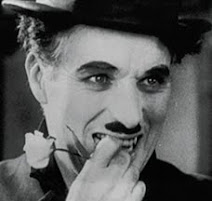
So Long Until Next Time: Art Clokey (1921-2010)
(Photo: © Premavision)
Art Clokey, the animator / inventor responsible for creating Gumby, and sparking an entire stop-motion animation industry, passed away last night at age 88.
I didn't pay a great deal of attention to the Gumby cartoon series as a child. I did watch, and owned a rubberized, pliable Gumby™ figurine when they were sold in the 1960's, but Gumby (and his sidekick, Pokey the horse) didn't attract me the way classically-animated cartoons did.

Clokey Working On Gumby Goes To The Moon, 1956
(Photo: © Premavision)
In part, this was because it looked too much like what it was: Stop-motion animation. The Classic, Hollywood animated cartoons created cel by cel (Warner Brothers' Merrie Melodies and Looney Tunes; Bob Clampett's or Tex Avery's work) for me were fluid, even graceful, chaos by comparison.
The Road Runner and Wyle E. Coyote or Bugs and Daffy presented things that weren't possible in reality -- which is what happens in a child's imagination. Gumby and Pokey seemed too much like what I would see playing with toy soldiers or cars in the back yard of my family's home.
It took a different kind of imagination to appreciate both the artistry in the stop-motion medium, and see Clokey's work in a different light. I loved the Wallace and Grommitt films -- painstakingly crafted, amazingly creative, and funny -- along with Tim Burton's Nightmare Before Christmas, or James and the Giant Peach; Corpse Bride; and the recent film 9.
Burton's work, even Thomas The Tank Engine (not quite stop-motion) and the ubiquitous Mister Bill of SNL, might not have been realized without Clokey's imaginative adventures of Gumby and Pokey, Nopey, and the Blockheads.

"I'm Gumby, Damnit" (Saturday Night Live)

Jack Thinks About ExMass (Burton's Nightmare)

The Classic Wallace and Grommitt
n 1955, a pupil of legendary animator Slavko Vorkapich produced a short claymation student film at the University of Southern California. The pupil was Art Clokey; his short film was Gumbasia (based on Disney's 1940 Fantasia), a Claymation, stop-motion animation starring a simple and oddly-shaped character formed out of green, plasticine clay, invented by Clokey and his wife, Ruth.
Ruth suggested to her husband that his film's character should be simple, based on the Gingerbread man -- and green, simply because it was Clokey's favorite color. Gumby's legs and feet were made wide to ensure the clay character would stand up during stop-motion filming, and the slanted shape of Gumby's head -- instantly recognizable, now -- was based on a hair style Clokey's father sported in an old family photograph.

Gumby And Pokey During The Classic TV Years.
Clokey's student film, and several subsequent short 'test cartoons', were well-regarded enough that they were shown during NBC's extremely popular children's program, The Howdy Doody Show, for test reactions from studio and viewing audiences in 1956. The first animation, "Gumby Goes To The Moon", didn't impress NBC executives; however, Clokey's second work, "Robot Rumpus", won them over, and Clokey signed a deal with NBC in 1957 for the first Gumby show.

The original Gumby Show only lasted for two years at NBC, but afterwards Clokey continued trying to bring his characters back to the small screen. He succeeded in 1961, and Clokey's production company created episodes of Gumby for the next seven years. Even after production officially ceased in 1968, these classic Gumby episodes were rebroadcast on local stations in America for decades.

After a long hiatus, Clokey and his production company entered into another contract with Lorimar Telepictures in 1988 to revive Gumby in new episodes with additional characters, which lasted into the mid-1990's. In 1997, Clokey's production group released "Gumby, The Movie".

2009 Advertisement For Clokey Documentary
Clokey fell into relative obscurity, and some financial difficulty (why America does this to its artists when other cultures don't is saddening and disheartening). It's good that people like Tim Burton acknowledge the debt they owe to Clokey's imagination and work. Clokey never stopped being his own foremost advocate, until old age and declining health forced him to depend on his son, Joe, to carry on his animation legacy.
Fortunately, there is a public who remembers and values Clokey's contribution; they remember Gumby and Pokey as part of the furniture of their imagination as children. In the past five years, there were retrospectives of Clokey's work in New York and San Francisco; a documentary film, Gumby Dharma, was made about him and released in 2006. His son continues to push to bring Gumby and Pokey back to television for new generations of children; and Clokey lived to see digitally-remastered DVD versions of his television episodes completed.
Anything which adds gentleness and laughter, particularly for children, in this world is an absolute good -- so I hope he's successful.
Thanks, Art.



No comments:
Post a Comment